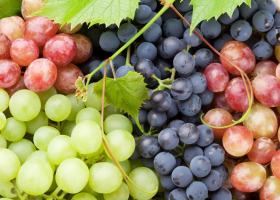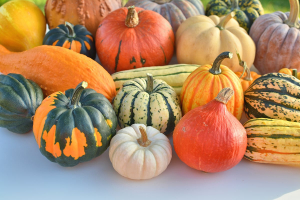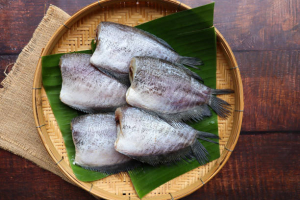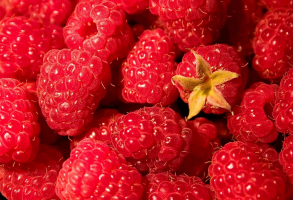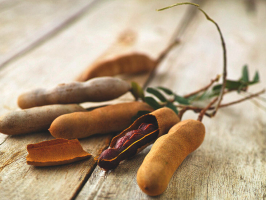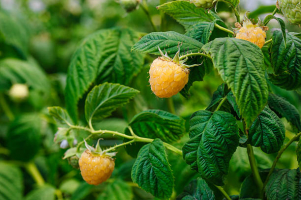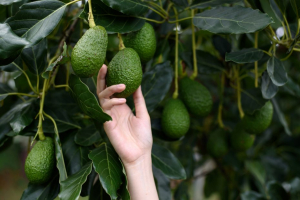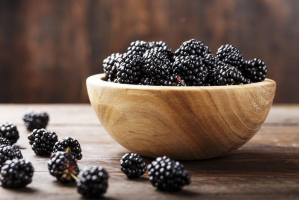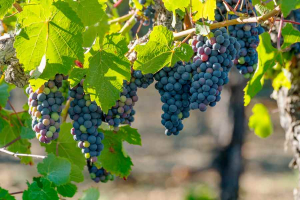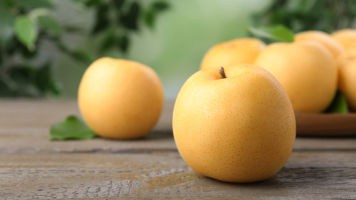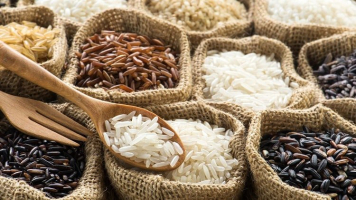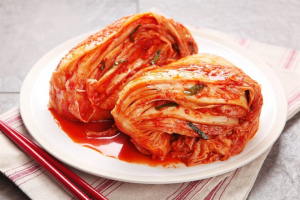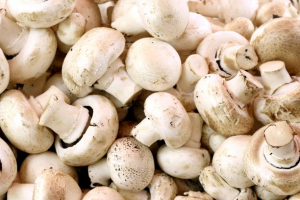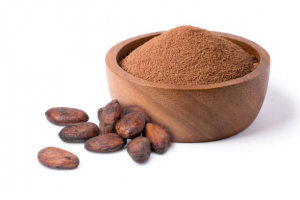Top 10 Most Delicious Types of Orange Fruits
There is nothing more refreshing than a juicy orange. Whether it's that first sip of freshly squeezed orange juice served with your scrambled eggs and bacon at ... read more...breakfast or that peeled slice you're enjoying as midday, post-workout snack, oranges quench your thirst no matter the occasion. Plus, they are packed with all the good things for you, like vitamin C, antioxidants, and fiber, which Medical News Daily says can help keep your heart healthy. Below are the most delicious types of orange fruits, let's find out!
-
Navel oranges, botanically classified as Citrus sinensis, are a winter variety that grows on evergreen trees reaching over six meters in height and belongs to the Rutaceae or citrus family. The Navel orange comes in more than fifty different varieties and is one of the most well-known citrus fruits in the world. It is also known as the Washington Navel, Riverside Navel, and Bahia Navel. Due to the lack of seeds in navel oranges, grafting is the only method of growth, making all navel orange trees genetic clones of the original tree found in Brazil in 1820. Navel oranges are distinguished by their tiny holes, or "navels", that resemble belly buttons at the bloom stem end. A secondary orange sprouts inside the larger fruit due to a genetic abnormality, which results in these tiny holes. Navel oranges are predominately favored for fresh eating and are also used by chefs and home cooks for zesting, flavoring sauces, and garnish.
Oranges with a "navel" or distinctive circular hole on the flower stem end are medium to big in size, measuring 6 to 10 centimeters in diameter on average, and globular to slightly oval in shape. Due to the numerous oil glands scattered across the surface, the medium-thick rind matures from green to bright orange and is smooth with a pebbled feel. The white pith, which lies beneath the rind's outer layer and adheres to the flesh, is soft and easily peelable. The flesh is a pale yellow-orange color and is separated into 10 to 12 segments by thin membranes. It is delicious, soft, and seedless. Navel oranges have a balanced blend of sweet, tangy, and tart flavors because they are aromatic, sweet, and moderate in acidity.
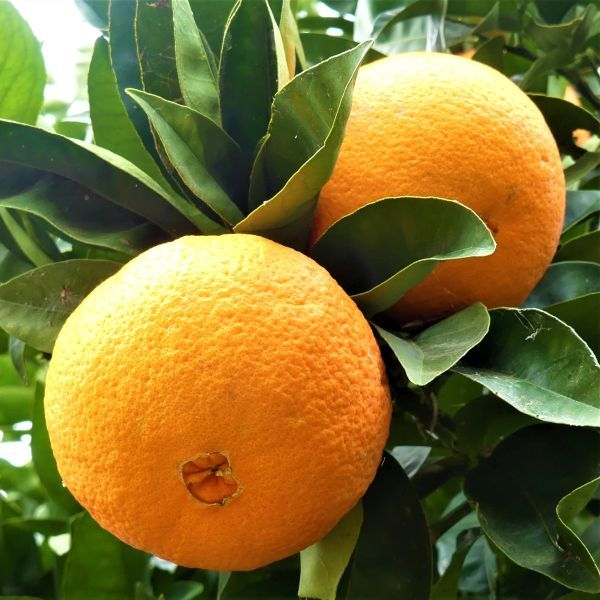
Citrus.com 
Citrus Industry Magazine -
Blood orange is a variety of orange (also referred to as raspberry orange) with crimson, almost blood-colored flesh. The presence of anthocyanins, a class of polyphenol pigments prevalent in many flowers and fruit but unusual in citrus fruits, is what gives these fruits their distinctive black flesh color. The primary substance present in red oranges is the chrysanthemum, also known as cyanidin 3-O-glucoside. When the fruit ripens at low temperatures during the night, the flesh takes on its distinctive crimson hue. Depending on the blood orange variety, dark pigmentation can occasionally be noticed on the rinds outside. The skin of some oranges can be rougher and more difficult to peel than other oranges. In contrast to other oranges, blood oranges have a distinct raspberry-like flavor in addition to the regular citrus characteristics.
Raw blood oranges are a rich source (20% or greater of the Daily Value, DV) of vitamin C and dietary fiber, and a moderate source of folate (15% DV), with no other micronutrients in significant content. Some blood orange juice may be a little tart, while other varieties are sweet while still tasting like blood oranges. The zest from the oranges can be used in baking, and the oranges can also be utilized to make marmalade. Sliced blood oranges, bulb fennel, and olive oil are the main ingredients in a common Sicilian winter salad. The oranges have also been used to make Italian soda, sorbet, and gelato.
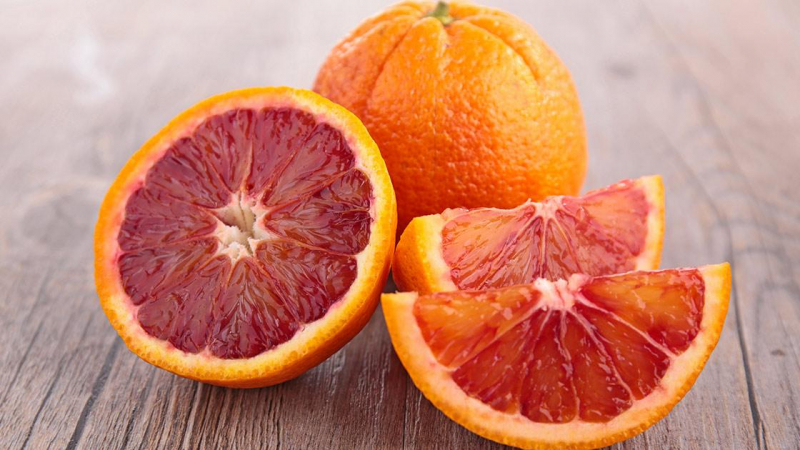
MICHELIN Guide - The Michelin Group 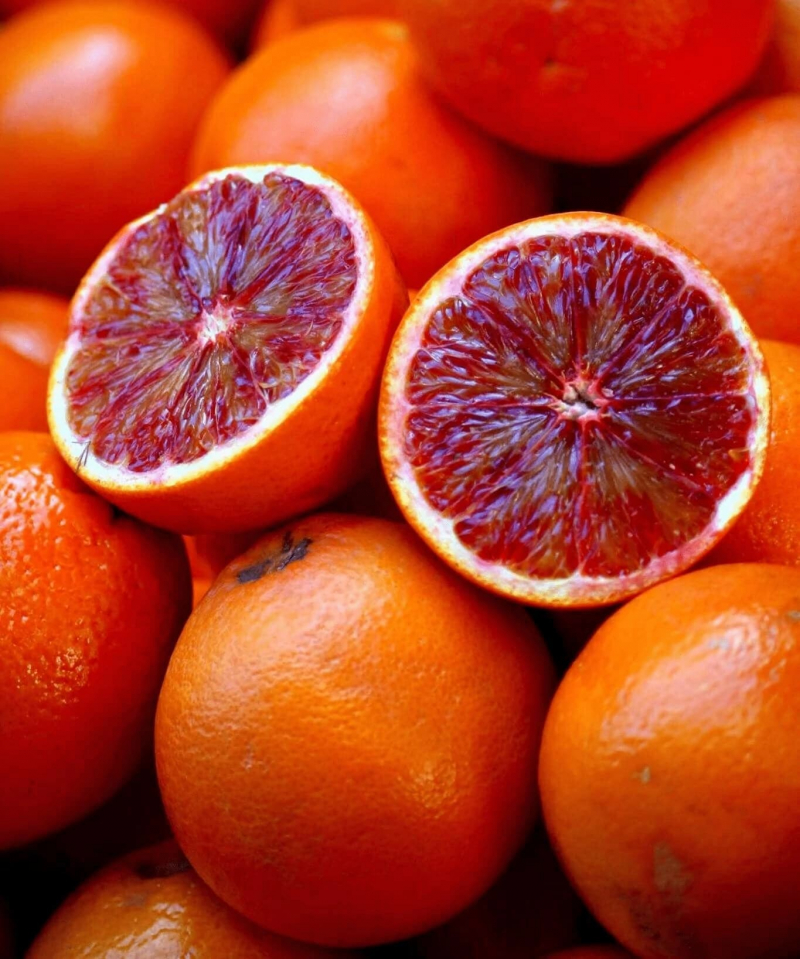
iStock -
Cara Cara oranges, botanically classified as Citrus sinensis, are a natural hybrid that belongs to the Rutaceae or citrus family. They are also referred to as Pink and Red navels and were found in Venezuela as a mutation on a Washington navel orange tree. They are thought to be a cross between the Brazilian Bahia and the Washington navel orange. Cara Cara oranges, which are prized for their berry-like flavor and low acidity, have recently grown in acceptance as specialty fruits are being promoted on social media, raising awareness of the uncommon varieties.
Cara Cara oranges are round to slightly rectangular in shape and medium to large in size, measuring 7 to 10 centimeters in diameter on average. The medium-thick, glossy, and prominently oil gland-covered brilliant orange rind has a pebbly texture. The white pith, which lies beneath the rind's outer layer and has a soft, spongy texture, adheres to the flesh. The flesh exhibits an unusual combination of orange, pink, and red colors and is soft, seedless, and segmented into 10–11 segments by thin membranes.
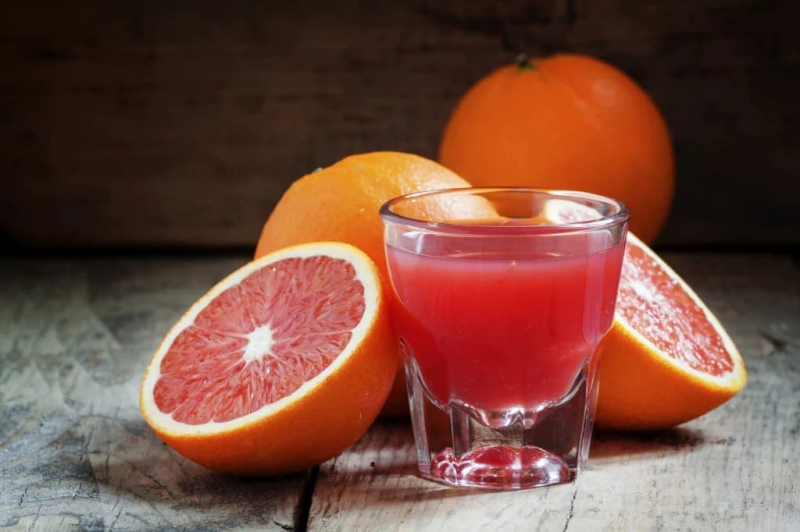
Fast Growing Trees 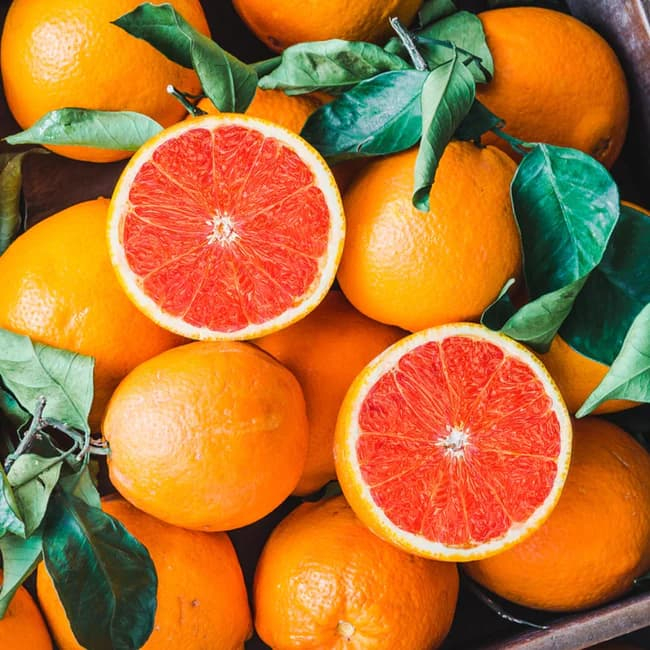
Fast Growing Trees -
The mandarin orange, also known as the mandarin or mandarine, is a small citrus tree fruit. Treated as a distinct species of orange, it is usually eaten plain or in fruit salads. Tangerines are a group of orange-colored citrus fruit consisting of hybrids of mandarin orange with some pomelo contribution. According to genetic studies, mandarin was one of the original citrus species; through breeding or natural hybridization, it is the ancestor of many hybrid citrus cultivars.
Mandarin orange fruits range in size from 40 to 80 millimeters. Orange, yellow-orange, or red-orange best describes their color. Because it is thin, the skin readily peeled off. Mandarin oranges have the benefit of being easier to peel than other citrus fruits, which is a significant advantage. Similar to other citrus fruits, the endocarp (inner flesh) is divided into segments, each of which is made up of a significant number of elongated cells. The fruits may not have any seeds or have few seeds. Fruits from mandarin orange trees have a pleasant flavor and can be consumed whole or juiced.
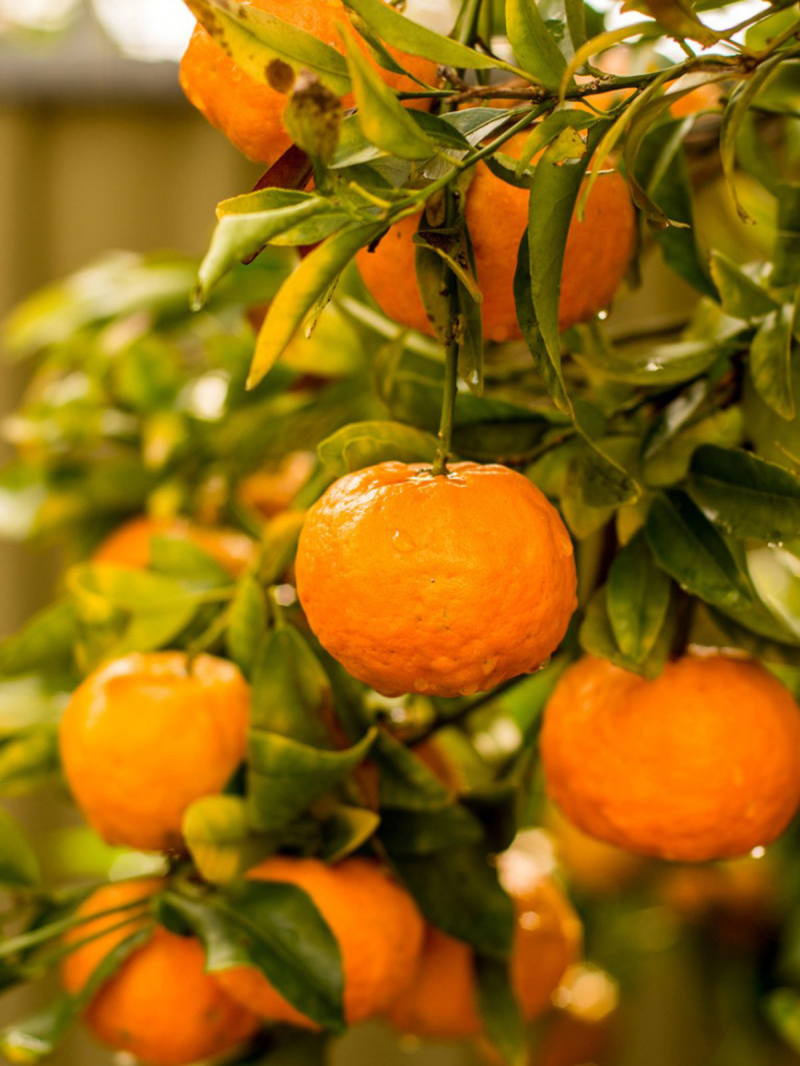
Gardening Know How 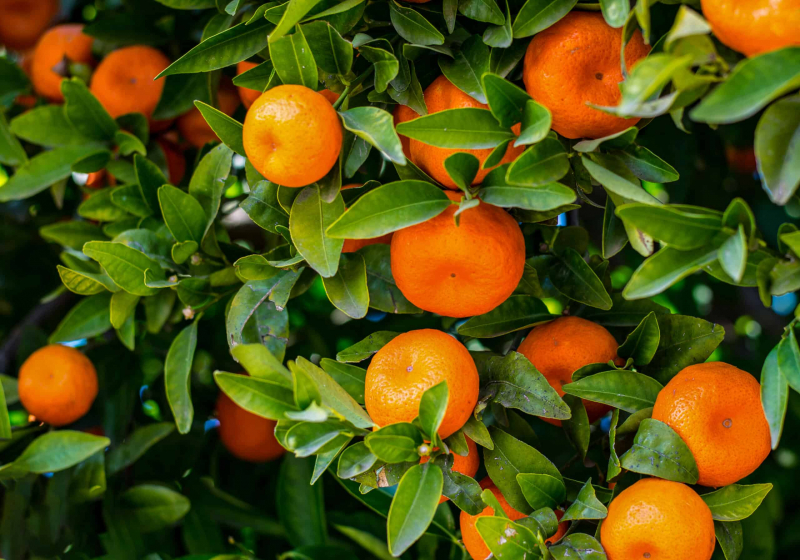
Harvest to Table -
The Algerian tangerine, or Citrus Clementina, also goes by the more common name of clementine. The "kid glove orange" is another moniker for it because of the loose and simple peel rind. The mandarin family, which also contains other tangerines, tangelos, and tangors, includes Algerian tangerines, which are a cross between an orange and a mandarin. Tangerines have half the daily required amount of vitamin C and are particularly high in vitamin C. Although they have few calories and few nutrients overall, they do contain two tablespoons of sugar, some fiber, potassium, and folic acid.
With a diameter of fewer than 2.5 inches, Algerian tangerines are among the tiniest citrus fruits. They might be oblate, oblong, or pyriform in shape; short necks are not usually present. The rind is deeply orange and pebbled. The thin and simple peel rind of the Algerian tangerine, combined with the absence of seeds generally, make this fruit a great snack. There are eight to twelve distinct segments of delicious, rich orange flesh inside. The flavor has been characterized as melting, soft, and reviving and is highly sweet.
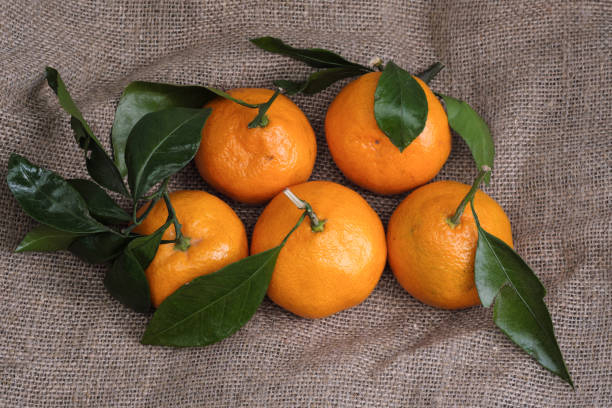
iStock 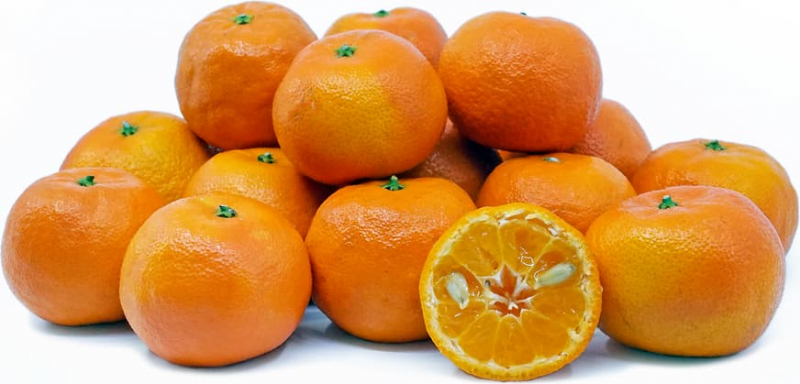
Specialty Produce -
Clementines, botanically a part of the Citrus genus, are a hybrid mandarin variety belonging to the Rutaceae family. The aromatic fruits are among the tiniest orange cultivars readily accessible in commercial markets, and the name Clementine is a broad term used to describe over fifteen closely related hybrid kinds that exhibit comparable traits. Clementines are well-liked fruits all around the world because of their small size, easily peeled skin, and sweet flavor. The fruits, which are grown all over the world to be available all year round, are generally consumed fresh, sometimes carried as a popular kid's snack or as a portable meal.
Clementines are small to medium-sized fruits with an average diameter of 5 to 10 centimeters. Their shapes range from round, occasionally slightly flattened, to oblate. Due to the abundant oil glands, the skin is delicate, brilliant orange to orange-red, and semi-smooth, varying from glossy, and leathery, to slightly grainy. The skin is very simple to separate from the flesh and, when ripped, releases an aromatic and cheery floral scent while exposing a thin layer of white pith beneath. The orange flesh is separated into 7 to 14 segments by thin membranes, and the pith does not attach to it. The flesh is sensitive, soft, and semi-aqueous; it may be discovered to be seedless or to have a few cream-colored seeds.

Healthline 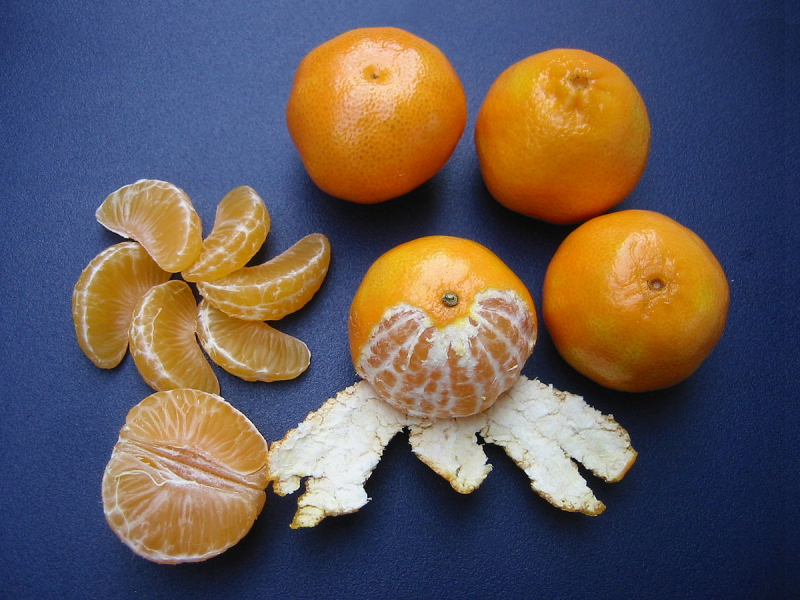
Wikipedia -
Bergamot oranges, botanically classified as Citrus bergamia, are hybrid citrus that grows on small bushy trees that can reach up to three meters in height and are members of the Rutaceae family. It is not consumed fresh but is valued for the aromatic oil found in the rind. It is thought to be a hybrid of sour orange and a lemon or lime. The city of Bergamo in northern Italy is where the essential oil for use in colognes, teas, and confections is produced, giving rise to the variety's name.
Bergamot oranges are globular to obovoid in shape and small to medium in size, measuring 6 to 8 centimeters in diameter on average. Due to the obvious oil glands that are dispersed all over the surface, the glossy rind matures from green to bright yellow and develops a smooth, pebbled texture. The pith is white, spongy, semi-thick, and has a texture similar to cotton underneath the rind. Thin, white membranes split the delicate, pale-yellow flesh into 8–14 segments. It has an extremely acidic, harsh, and bitter taste and a few cream-colored seeds as well, making it generally unfit for fresh eating. Bergamot oranges are renowned for their aromatic rind, which is rich in essential oils with bright citrus undertones and notes of fresh flowers.
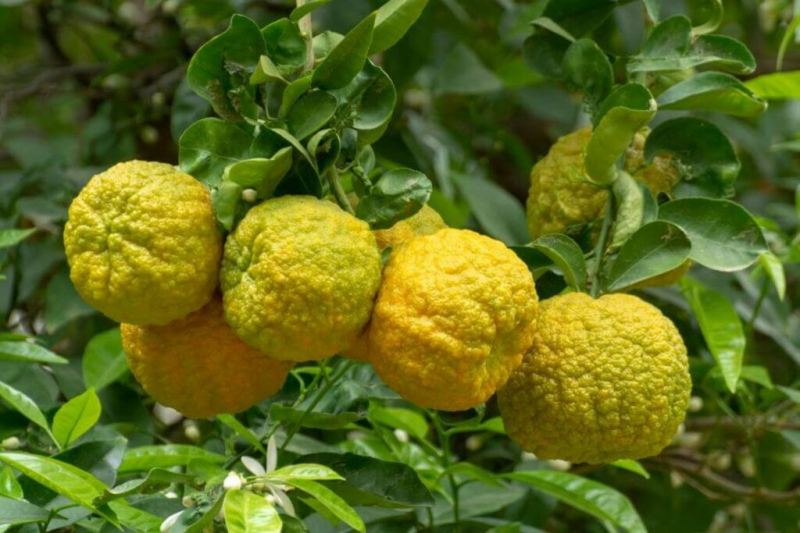
Plantura Garden 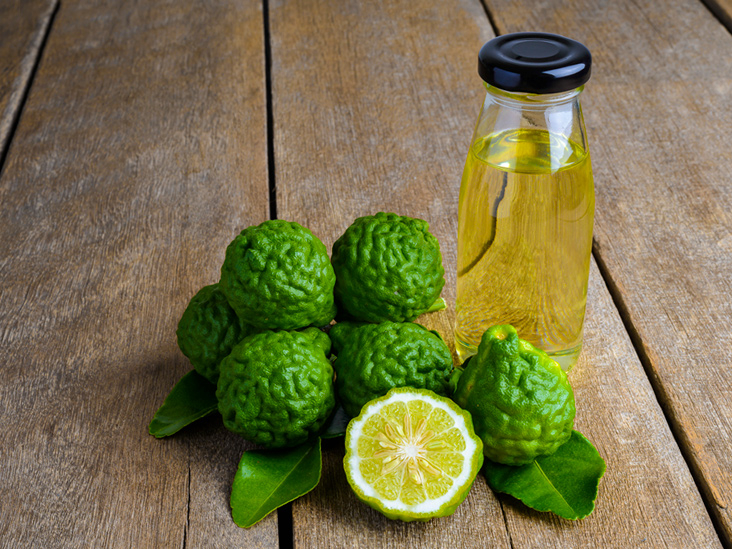
Healthline -
Valencia oranges, botanically classified as Citrus sinensis, are a sweet orange variety that grows on evergreen trees and is a member of the Rutaceae or citrus family. The original Valencia orange, also known as the Summer orange, is one of the most well-known kinds in the world and has at least fifty different subvarieties and hybrids that are now known to exist. The only oranges that mature in the summer are Valencia oranges, a late-season type. Their sweet-tart flavor and juice make them a favorite among chefs and home cooks. Because of how well-liked the juice is, more than half of Florida's citrus crop is Valencia oranges, and the vast majority of these oranges are farmed for juice.
Valencia oranges are round to oval in shape and medium to large in size, measuring 7 to 10 centimeters in diameter on average. Due to the numerous noticeable oil glands that carry fragrant essential oils, the thin, golden orange peel has a rough, leathery texture. The white, spongy pith that lies beneath the rind's outer layer adheres firmly to the fruit's meat, making it challenging to peel. The yellow-orange flesh is soft and very juicy. It is separated into 10–12 segments by thin membranes, and it contains 1-6 cream-colored seeds. It is significant to remember that Valencia oranges can experience regreening, which occurs when the fruit reabsorbs chlorophyll, giving it greenish tones despite being fully ripe.

The Spruce Eats 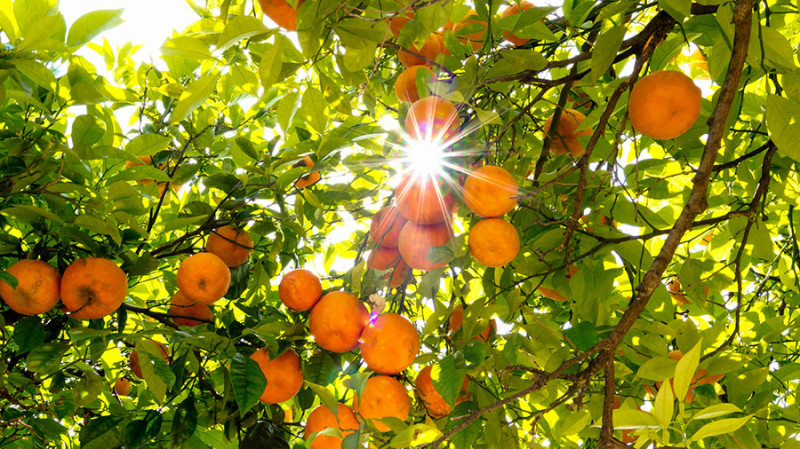
KLM Blog -
Seville oranges, botanically classified as Citrus aurantium, are a bitter or sour variety that grows on evergreen trees and is a member of the Rutaceae or citrus family. Its name comes from Seville, Spain when they were brought from Asia during the 12th century and became an emblem for the city. It is a hybrid between a pomelo and a mandarin. Seville's streets are lined with more than 14,000 bitter orange trees that were planted as part of the city's urban landscape. These trees offer year-round foliage and summertime shade. Despite the fact that the Spanish city is surrounded by orange trees, Seville oranges are primarily exported from Spain to England to manufacture orange marmalade. Additionally, due to the oranges' sour flavor, cooked preparations are preferred over fresh ones.
Seville oranges are round to oblate in shape and small to medium in size, measuring 7-8 centimeters in diameter on average. The thick, yellow-orange rind has some noticeable knobs and bumps and is rough and dimpled in texture. The rind also has many oil glands that secrete flowery essential oils with a faint bitter undertone. The white pith, which is spongy and bitter, adheres to the meat underneath the rind. The flesh is smooth, and delicious, and varies in color from yellow to deep orange. It is separated into 10–11 segments by delicate white membranes and is packed with numerous cream-colored seeds. Seville oranges are aromatic when ripe and have a sour, acidic, tangy, and mildly bitter flavor.
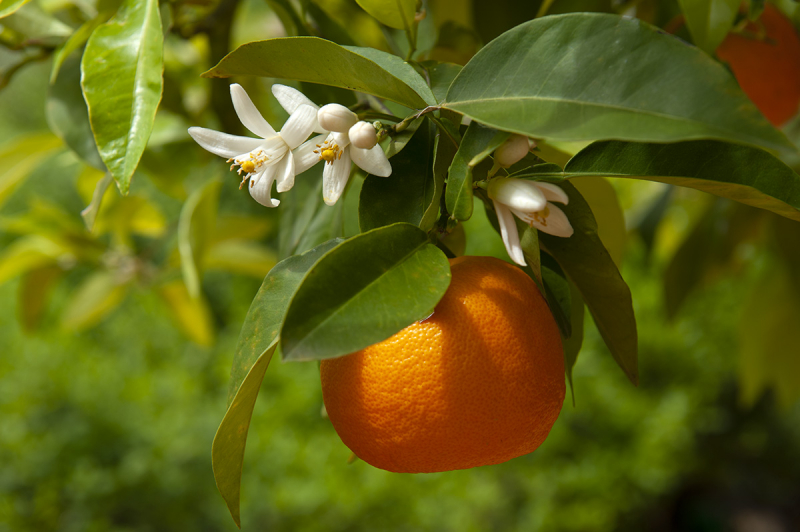
Andalucia.com 
The Spruce Eats -
Lima oranges, botanically classified as Citrus sinensis, are an acidless variety growing on evergreen trees that can reach up to ten meters in height and belongs to the Rutaceae or citrus family. Because they lack acid, which reduces storage life, Lima oranges, an early-season variety, are primarily limited to their growing region and are loved in the Mediterranean and Brazil for their sweet flavor. The oranges are primarily consumed fresh and are also used to make juice.
Lima oranges range from small to medium in size, with a diameter of 6 to 8 centimeters, and a round to asymmetrical form. Due to the abundance of many oil glands, which also carry fragrant oil, the medium-thick, bright orange peel has a leathery, pocked texture. The white pith, which lies beneath the rind, is spongy and has a texture like cotton, and it adheres tenaciously to the flesh. The soft, sensitive, and tasty flesh is a light orange to yellow color and is separated into 8–10 segments by thin, white membranes. It also contains a few cream-colored seeds. Lima oranges have a fragrant aroma and no acid, which gives them a pleasant flavor.
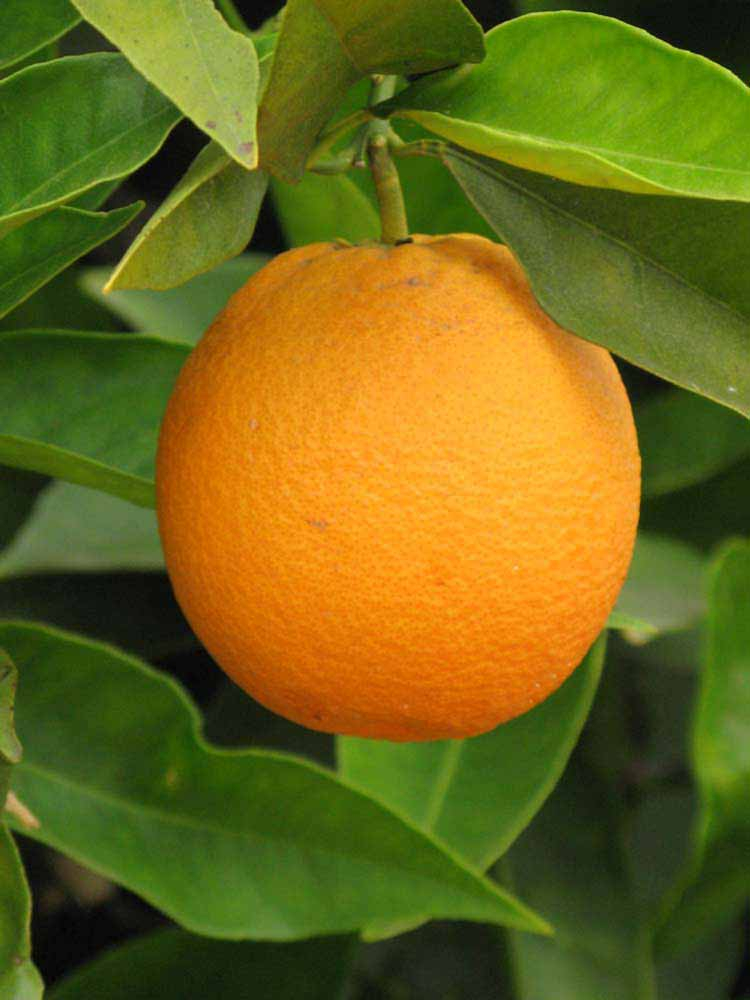
IDTools.org 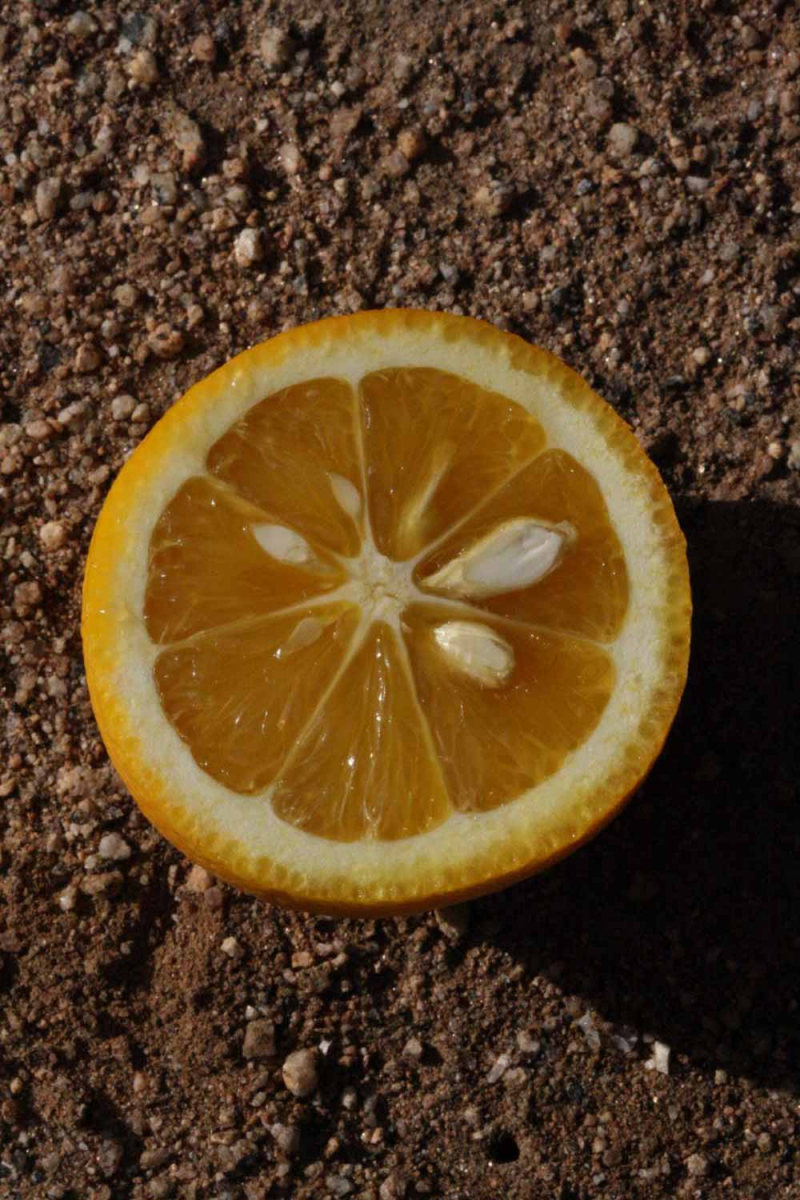
IDTools.org












